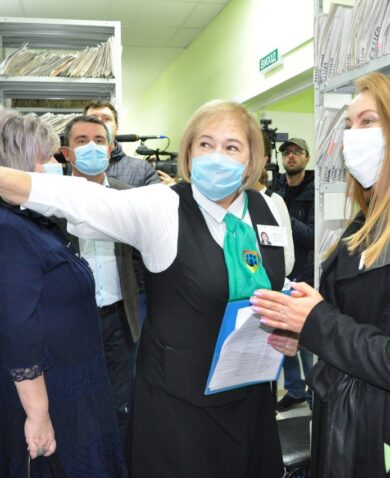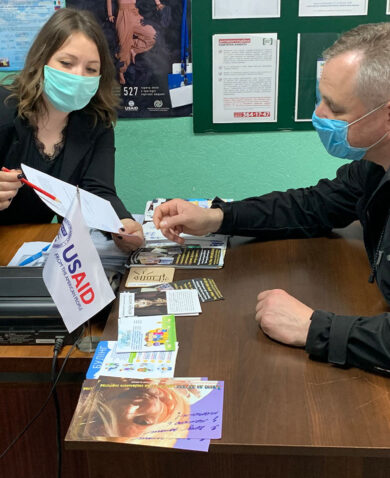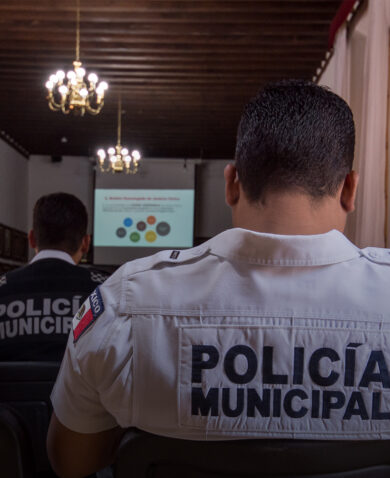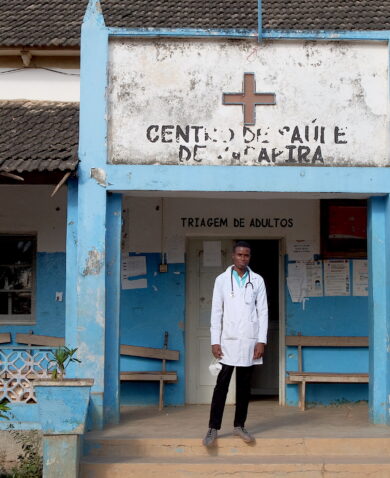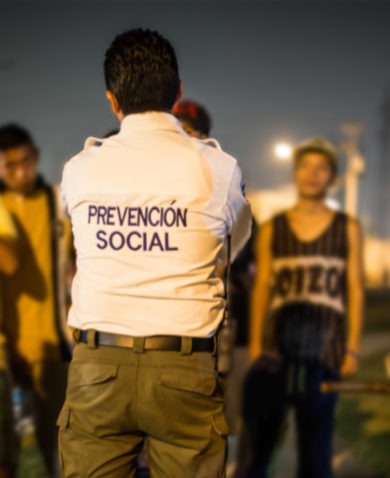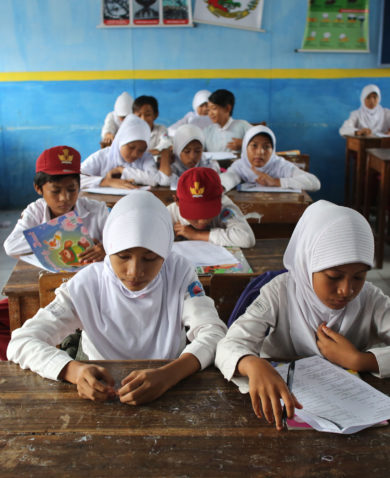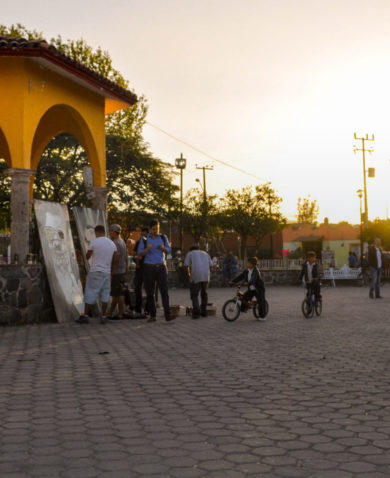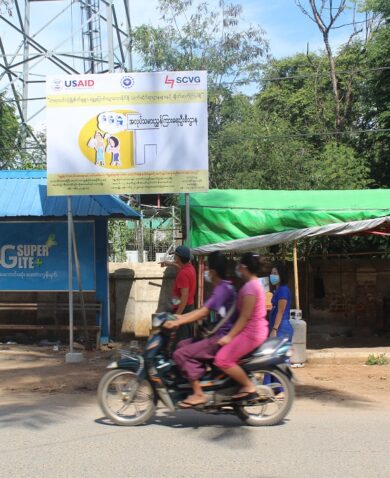
For Holistic Violence Prevention, Consider the Local Systems Framework
April 8, 2021 | 4 Minute ReadWithout understanding complex political dynamics, motives, and systems, development practitioners risk exacerbating drivers of violence. USAID's Local Systems Framework can help to ensure programming is effective in curbing violence.
Community violence manifests in myriad forms, from gang violence to organized crime. The gamut of ways in which violence materializes implies a litany of societal cleavages, weak governance, and discordant agendas. Too often, efforts to prevent violence either diagnose the causes of violence too narrowly or fail to connect violence prevention on the individual level with necessary changes on the institutional level. Without properly understanding interwoven incentives, political dynamics, and systemic variables of a given context, development practitioners run the risk of implementing ineffective programs or worse: exacerbating drivers of violence. USAID’s Local Systems Framework (LSF) allows program implementers a structured process by which they can map networks and orient program objectives to the actors and variables that drive the local system. The LSF enables violence prevention practitioners to meet contextualized needs while allowing for scalability, ultimately addressing the three critical elements of violence prevention efforts:
- Awareness of the system’s actors and their relationships
- Knowledge of the political dynamics of a system; and
- Activation of relationships, knowledge, and support to deftly navigate system volatility
LSF in Action: Mexico Juntos para la Prevención de la Violencia
Chemonics adapted and operationalized the LSF after the first year of implementation of the USAID/Mexico Juntos para la Prevención de la Violencia (JPV) project to take a more holistic, politically adept approach to violence prevention, particularly with youth populations, a particular challenge in the local context. The JPV project defined youth community-level violence as violence perpetrated between young people, vandalism, and family violence, which in some cases included domestic and gender-based violence. The specific violence incidence on which the program focused varied by locality. Below are the three critical steps the project took to implement LSF:
Awareness of System Actors
To begin, the JPV team mapped the local actors involved in violence prevention and determined the relationships and communication patterns between them. The regional coordinators used USAID’s 5Rs Framework, which highlights five key dimensions of systems — Results, Roles, Relationships, Rules, and Resources — to ensure a thorough, methodologically sound approach to charting the six subnational systems of focus for JPV. To connect this exercise directly to violence prevention, the program used the 5Rs to establish interlocking principles that functioning systems of violence prevention share: collaboration, communication, transparency, accountability, sustainability, a focus on outcome, and an emphasis on evidence-based decision-making.
There were also several important layers to the mapping. The first was understanding who is connected to whom. The second was deciphering the relationships of power between the actors and how they communicated. The third was to identify specific individuals who were open to LSF, were leaders, and could get results. In this way, the project sought to avoid political pitfalls and connect the right pieces at the right time. Finally, the project sought to measure the capacity of these actors via organizational performance indices such as the Governmental Organizations Performance Index – Prevention (GOPI-P) and the Organization Performance Index-Prevention (OPI-P) modified to measure progress toward institutional violence prevention performance.
Knowledge of Political Dynamics
Properly understanding the actors, incentives, and dynamics that comprise each local system enables the project to navigate the fluid political dynamics that made an already precarious set of programming objectives even more challenging. The LSF mapping process allowed the Mexico JPV team to understand the quality of the system allowing for the identification and building up of positive deviance. By devoting time and resources to properly mapping the system, the JPV team could also chart system actors who could inhibit and were inhibiting system progress. As such, LSF mapping helped the project categorize the various system actors by the degree to which they are able and interested in bolstering systemic violence prevention. The JPV team thus mapped not only the actors, but the agendas and incentives that governed the local system. This degree of granular information was invaluable in orienting the program’s sensitive work in highly unique and precarious contexts.
Activating Relationships, Knowledge, and Support
A further critical adaptation of this program was to establish an “anchor” organization that would coordinate the interactions amongst those in the system. Among the roles the anchor played, most fit the elements of a collective impact approach: backbone organization, common agenda, transparency and accountability mechanisms, and open, well-defined communication channels. While the anchor was not responsible for implementing the discreet projects identified by the various system organizations or for managing the interactions of the systems’ actors, it was responsible for facilitating these processes to help achieve a set of shared goals. The JPV team determined that the anchor should have legitimacy, networking, and convening capabilities. Even though JPV selected the anchor organizations because of their preexisting capacity and position of influence, the project offered targeted support to reinforce anchor organizations’ ability to lead, organize, and ultimately take the mantle of guiding holistic violence prevention in their system.
With a clear map of the local system in place and an anchor organization identified, the project was well positioned to curate community-specific interventions that balanced program sensitivity with systemic impact. Arguably the most impactful of these interactions with the state was JPV’s work on civic justice. The program worked with 27 municipalities to implement what it called the Civic Justice Homologated Model, a program that seeks to stop the escalation of everyday conflict into criminal or violent acts through non-judicial conflict resolution. In July 2019, the model was adopted nationwide by the federal government.
The LSF not only illuminated complex, fluid community-level dynamics and the actors and agendas that defined those dynamics, but also helped orient the type of support the Mexico JPV program could offer. Although the project had certain objective-level through lines, local actors determined programming, which led to a rich divergence and experimentation on violence prevention projects in the target areas. Interventions included cognitive-behavioral therapy and group therapy, interventions with environmental design components, and civic justice strategies, among other interventions with promising results in form and substance. In addition to the hundreds of youth who benefited directly from the therapy and the hundreds who participated in forums and workshops, municipal governments and civil society organizations improved their performances per the JPV performance indices, GOPI-P, and OPI-P. JPV also organized training of civil society organizations and government partners on gathering and organizing evidence on key drivers of and responses to youth community violence into what they called the Escala de Buenas Prácticas (EBP), or Good Practices Scale, for partners to measure success and adapt when they saw shortfalls.
Conclusion
Given the myriad manifestations of violence and their contextual specificities, implementers interested in violence prevention work should consider integrating the LSF into their programmatic approach. By methodically understanding the system, leveraging well-positioned system leaders, and aligning pathways to progress, the LSF provides programs with contextualized entry points to foster long-term change. By adopting the LSF, violence prevention projects can ensure responsive, adaptive programming that aligns with existing system incentives and avoids presumptive, potentially counterproductive interventions.
Posts on the blog represent the views of the authors and do not necessarily represent the views of Chemonics


